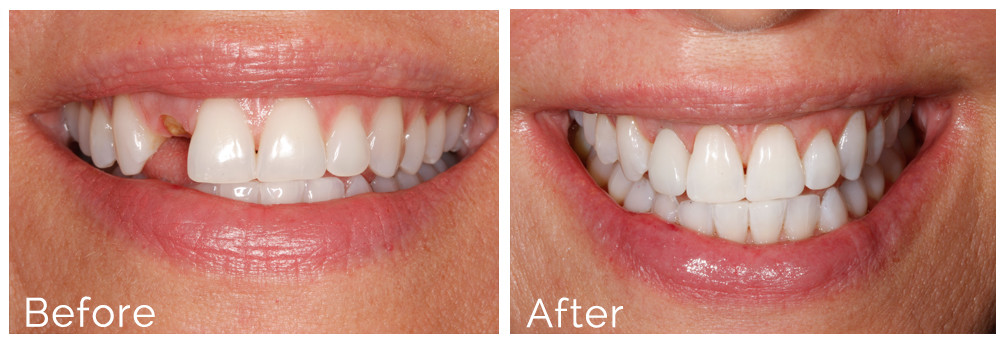The smart Trick of Dental Sense That Nobody is Discussing
The smart Trick of Dental Sense That Nobody is Discussing
Blog Article
The 10-Minute Rule for Dental Sense
Table of ContentsGetting The Dental Sense To WorkDental Sense Fundamentals ExplainedThe Facts About Dental Sense UncoveredGetting The Dental Sense To Work
are clinical devices surgically implanted into the jaw to recover a person's capability to eat or their look. They offer support for synthetic (fake) teeth, such as crowns, bridges, or dentures. When a tooth is lost because of injury or disease, a person can experience difficulties such as quick bone loss, faulty speech, or changes to chewing patterns that result in pain.Dental dental implant systems include a dental implant body and oral implant joint and may also include an abutment fixation screw. Dental implant vs bridge. The dental implant body is operatively put in the jawbone instead of the tooth's root. The oral implant joint is typically connected to the dental implant body by the abutment addiction screw and extends through periodontals right into the mouth to support the connected artificial teeth
(https://www.avitop.com/cs/members/dentalsense1.aspx)Structure of The Oral Implant System choosing dental implants, talk with your dental company regarding the potential advantages and risks, and whether you are a candidate for the treatment. Points to take into consideration: Your general health and wellness is a crucial factor in determining whether you are an excellent prospect for dental implants, for how long it will require to recover, and how long the dental implant might remain in place.
Smoking cigarettes might impact the healing process and reduce the lasting success of the implant. The recovery process for the implant body might take several months or longer, throughout which time you normally have a short-term joint instead of the tooth. the dental implant treatment: Meticulously follow the dental health instructions given to you by your dental service provider.
Dental Sense Can Be Fun For Everyone
Implant failure can lead to the demand for another surgery to fix or change the implant system. Recovers the capacity to eat Recovers cosmetic look Helps keep the jawbone from diminishing as a result of bone loss Preserves the health and wellness of the surrounding bone and gum tissues Assists keep surrounding (neighboring) teeth secure Boosts quality of life Damage to surrounding natural teeth throughout dental implant positioning Injury to the surrounding tissues throughout surgical procedure, such as sinus perforation Injury throughout surgery (for instance, fracture of surrounding jawbone) Poor feature, such as feeling like the teeth do not bite with each other typically A sensation that the tooth hangs or twisting in position arising from a joint screw loosening Implant body failing (looseness of the implant body) as a result of systemic infection, which may be extra most likely in individuals with uncontrolled diabetes because of regional infection in bone and periodontals sustaining the dental implant body as a result of delayed recovery, which might be most likely in patients that smoke Problem cleaning up the gum tissues around the implant, leading to poor oral hygiene Unattended gum disease Post-surgical tingling as a result of nerve impingement or damages Constantly notify healthcare suppliers and imaging service technicians that you have dental implants before any magnetic vibration imaging (MRI) or x-ray treatments.
FDA is not knowledgeable about any damaging events reported for MRI or x-ray treatments with dental implants. Oral implants systems are commonly constructed from products that adhere to international consensus standards of the International Organization for Standardization (ISO) or ASTM International. These criteria have information of what makes a safe product.

An oral implant is a framework that replaces a missing out on tooth. With screw-like devices, the doctor inserts an implant into the jawbone, and it acts as a support for a synthetic tooth, called a crown.
Dental Sense Things To Know Before You Buy
Some individuals are not eligible for dental implant surgical treatment. It is for dental cosmetic surgeons to run on individuals with: acute illnessuncontrollable metabolic diseasebone or soft tissue disease or infectionIf these problems are resolved, an individual can have the surgical procedure. In, dental specialists avoid from operating on individuals with: If individuals with any of the above go through dental implant surgical procedure, there is a higher threat of the implant stopping working.

Oral implant surgery is a tailored process. It's not the very same for everybody. The complying with offers a general summary of what you can anticipate your dentist, dental cosmetic surgeon, periodontist or prosthodontist to do: Put the implant operatively. Give you time to heal. Connect the post and final crown, bridge or denture.
Next, your cosmetic surgeon will thoroughly put the dental implant right into your jaw. Your cosmetic surgeon will certainly reposition your gum tissues and shut the laceration with stitches. If your implant is near the front of your mouth, your dentist will make a momentary tooth for you to put on until you heal. By doing this, you will not have a gap in your smile while you recover.
The 8-Minute Rule for Dental Sense
Your supplier can inform you what to expect in your circumstance. Throughout the recovery stage, your jawbone must fuse to the oral implant. This process, called osseointegration, is critical for security and long-term success. This procedure can take anywhere from three to 9 months. In many cases, it may take much longer.
Once your dental implant heals, your dental professional can attach the abutment (tiny port blog post) and your final reconstruction (crown, bridge or denture). This usually takes concerning one hour to finish and might require a second small surgery. You shouldn't really feel any type of pain throughout your dental implant treatment due to the fact that your copyright will certainly make use of drug to numb your periodontals.
Report this page